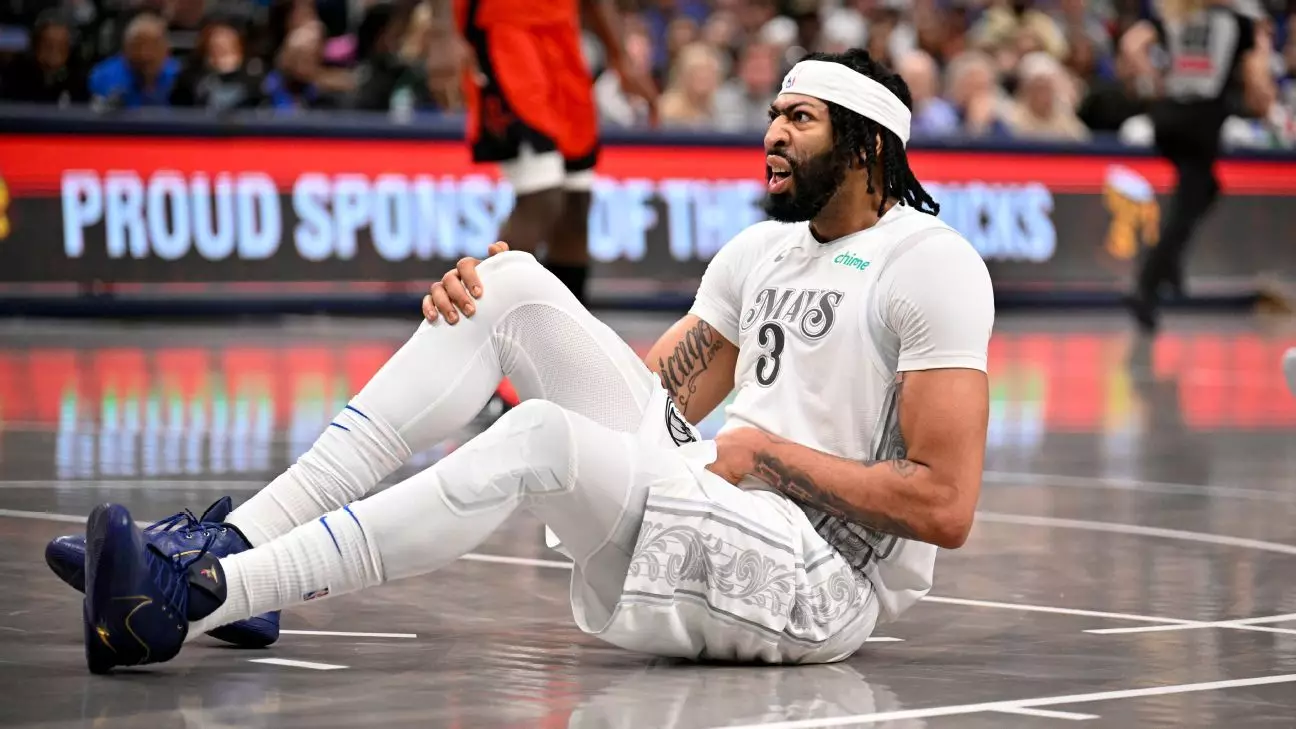The Dallas Mavericks made a significant splash in the NBA landscape by acquiring Anthony Davis in a highly publicized trade that sent their former centerpiece, Luka Doncic, to the Los Angeles Lakers. This move generated considerable excitement among Mavericks fans eager to see how Davis, a ten-time All-Star, would fit into their team. However, the optimism was quickly overshadowed by concerns when Davis sustained a “lower-body injury” during his first game with the Mavericks. This unfortunate setback raises questions not only about Davis’ immediate health but also the implications of this trade for the franchise moving forward.
Davis displayed his elite skill set during his debut against the Houston Rockets, putting up impressive numbers of 26 points, 16 rebounds, 7 assists, and 3 blocks in just 31 minutes on the court. His natural talents were on full display, signaling that he could be a transformative player for the Mavericks. Yet, the excitement was cut short when Davis left the game late in the third quarter and did not return, describing his discomfort as tightness between his groin and quadriceps. While he reassured fans that the injury was not serious, the timing could not have been worse for a team already grappling with the backlash from the recent trade.
Fan Reactions: Outrage and Uncertainty
In the wake of the trade, the Mavericks’ fanbase expressed significant frustration. Approximately 1,000 fans gathered outside the American Airlines Center to protest the trade, which they viewed as a departure from the franchise’s long-term vision. Many held signs and chanted slogans against Mavericks’ general manager Nico Harrison, who has faced threats since the controversial decision to trade one of the league’s brightest young stars. This unrest among supporters reveals a deep-seated anxiety about the direction in which the team is headed, especially when parting ways with Doncic—a player who captivated the league with both his talent and potential.
The fans’ discontent starkly contrasts with the initial excitement surrounding Davis. His dynamic performance during the game had previously electrified the arena. From the very first possession when he threw a lob to center Daniel Gafford, Davis seemed poised to reinvigorate the Mavericks’ playoff aspirations. However, the injury elicited a collective sigh of disappointment, reminding everyone of the fragility that often accompanies Davis throughout his career.
Durability Concerns and Future Implications
Anthony Davis has long been touted as one of the league’s premier talents, yet his career has been marred by injuries that frequently sideline him for critical stretches. Despite playing a career-high 76 games last season, his track record raises alarms about whether he can consistently stay healthy for the Mavericks. Missing the previous five games—three with the Lakers and two with Dallas—has already set a concerning precedent for the new team.
If the Mavericks hope to compete in a fiercely competitive Western Conference, they will need Davis to be at his best and on the court for as many games as possible. The potential for the Dallas team to establish itself as a formidable playoff contender hinges on Davis’ availability and ability to harness his peak performance. The early signs of his adaptation to a new team chemistry and playing style are promising, but the shadow of injury looms large.
The Dallas Mavericks’ acquisition of Anthony Davis has introduced both hope and trepidation into the franchise’s narrative. While his initial performance suggests that he can make a significant impact, the early setback raises doubts about his ability to stay healthy long term. As fan sentiments fluctuate between excitement and frustration, only time will reveal whether this bold trade will pay dividends or if it will be a costly misstep in the Mavericks’ search for a championship. The stakes are high for both the team and its fanbase, making it crucial for Davis to not only recover quickly but also to maintain his well-being throughout the season.

